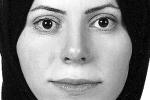Summer, particularly its final month of Shahrivar (started Aug. 22), is a popular time for Iranians to go on vacations by road where they unfortunately leave behind an alarming trail of death, injury and losses every year.
Road accidents have claimed the lives of 180 and injured 2,000 people during the 10-day period ending Aug. 31 this year alone, Police Chief Taqi Mehri said.
Iran has one of the deadliest road records in the world. Latest figures released by Iranian Legal Medicine Organization (the country’s coroner’s office) show traffic-related mortality registered in the last Iranian year (March 2015-16) was 21.1 deaths per 100,000.
In other words, road accidents claimed the lives of 16,584 people and possibly changed the fate of their families forever.
Road accidents impose direct or indirect expenses on families as well as the country. Latest statistics show these accidents cost the country about 320 billion rials ($9 million at market exchange rates) on a daily basis, which is 5% of the gross domestic product.
Medical costs (such as those of hospital or emergency medical services), funeral costs, damage to vehicles and public property, loss of insurance and compensation payments made to the families of the victim are a handful of direct expenses inflicted by car accidents.
Indirect expenses that are perhaps less evident could include the cost of treating the post-traumatic psychological disorders of victims’ families, or the loss of a part or total household income.
According to ILMO, many more men than women die each year in road crashes, such that about 77% of last year’s road fatalities involved men. Saeed Moeed-Far, an adviser of Roads and Urban Development Ministry, said over 43% of people who die on Iranian roads are people of ages 20 to 40. These figures show most victims are breadwinners of the family.
Car Accidents and Poverty
In October 2015, the American Journal of Epidemiology released a report saying that the poor are more likely to die in a car accident than more affluent victims.
Three reasons behind their arguments were: owning older cars or cars with fewer safety features, poor infrastructure and less traffic signs in low-income neighborhoods and the notion that impoverished people tend to use alternative forms of transportation, such as walking and motorcycling.
Usually it takes years to compile and organize the statistics for crash deaths and the vehicular problem that cause fatal accidents. However, it is a no-brainer for Iranians to single out the deadliest vehicles in their country; the popular cars afforded by lower middle income Iranians have the lowest safety rankings. They sometimes even lack the basic safety features such as airbags and anti-locking brakes system.
Because of poor road safety factors of asphalt, lighting, road marking and safety barriers, less-privileged Iranian provinces have the highest number of road fatalities. For instance, the less-developed Ilam and Sistan-Baluchestan were among the top 10 Iranian provinces with the highest car-accident death rates last year (30.1 and 27.4 per 100,000 people respectively).
Official figures show that the north-central province of Semnan had the highest road fatalities last year (45.2 per 100,000 people), whereas the capital city Tehran had the lowest number of accident deaths (9.6 per 100,000 people).
Finally, according to Road Maintenance and Transportation Organization, pedestrians and motorcyclists account for 45% of road fatalities in Iran. All in all, it’s a diabolical cycle, poverty increases the chances of dying on the roads and such a death makes the bereaved families more poverty stricken. This cycle hampers the economic development of societies and countries.



